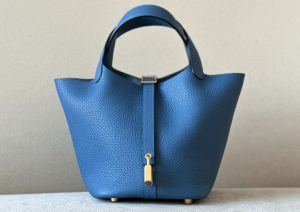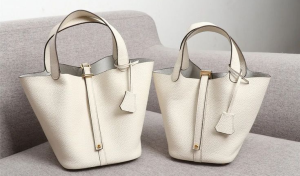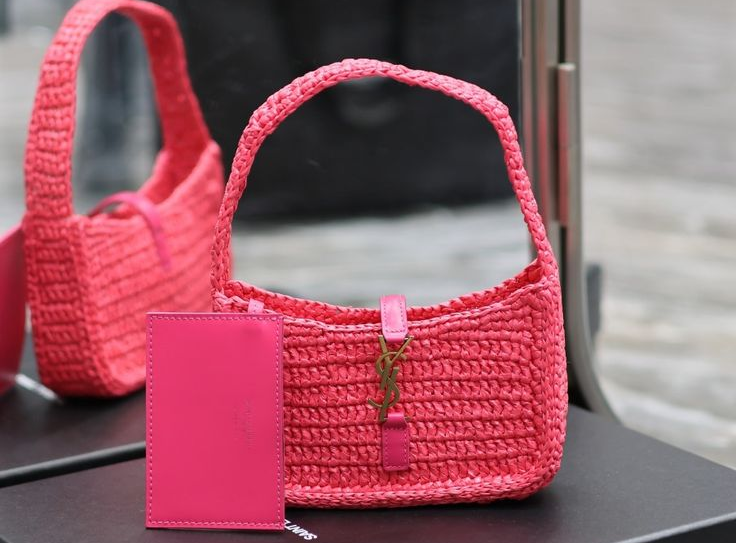Avant-garde fashion is a realm where innovation meets artistic expression, pushing the boundaries of conventional design. It challenges traditional aesthetics, often merging art with functionality to create pieces that are not only stylish but also thought-provoking. Among the myriad of avant-garde accessories, artisanal bags have carved out a unique niche, showcasing the skill of craftspeople and the creativity of designers. This article will explore the world of avant-garde fashion through the lens of artisanal bags, examining their history, significance, and the rising trend of sustainable practices in the industry.
1. Understanding Avant-Garde Fashion
1.1 Defining Avant-Garde Fashion
Avant-garde fashion is characterized by its forward-thinking design philosophy. It often embraces experimental techniques, unconventional materials, and innovative silhouettes that defy traditional fashion norms. The term “avant-garde” originates from the French military, meaning “advance guard,” which reflects the movement’s role in pushing boundaries and leading the way for new ideas.
Key characteristics of avant-garde fashion include:
- Unconventional Materials: Designers frequently use materials that are not typically associated with fashion, such as plastics, metals, or recycled items.
- Unique Silhouettes: Avant-garde designs often feature exaggerated shapes, asymmetrical cuts, and layered looks that challenge the conventional body silhouette.
- Artistic Expression: Many avant-garde pieces are inspired by art movements, incorporating elements of sculpture, painting, or performance art into wearable fashion.
- Cultural Commentary: Avant-garde fashion often serves as a form of social or political commentary, addressing issues such as consumerism, identity, and environmental concerns.
1.2 Historical Context of Avant-Garde Fashion
Avant-garde fashion has its roots in the early 20th century, emerging as a response to the rigidity of traditional haute couture. Designers like Paul Poiret and Coco Chanel began to introduce more relaxed silhouettes and innovative designs, paving the way for future avant-garde movements.
The 1960s and 1970s saw a surge in avant-garde fashion, with designers like Yves Saint Laurent and Pierre Cardin challenging norms through unisex styles and futuristic aesthetics. The punk movement of the late 1970s also contributed to the avant-garde ethos, emphasizing individuality and anti-establishment sentiments.
In the 1980s and 1990s, designers such as Issey Miyake, Comme des Garçons, and Alexander McQueen further expanded the boundaries of avant-garde fashion. They introduced sculptural forms and theatrical presentations, elevating fashion to an art form.
2. The Artisanal Bag: A Fusion of Craftsmanship and Design

2.1 What Makes a Bag Artisanal?
Artisanal bags are characterized by their handcrafted quality and attention to detail. Unlike mass-produced accessories, artisanal bags are often made using traditional techniques passed down through generations. Each bag reflects the craftsmanship and creativity of its maker, resulting in unique and often one-of-a-kind pieces.
Key features of artisanal bags include:
- Handcrafted Techniques: Artisanal bags are typically made by skilled artisans who use traditional techniques such as weaving, embroidery, and leatherworking.
- Quality Materials: These bags often use high-quality, sustainable materials sourced from local suppliers, ensuring durability and longevity.
- Unique Designs: Each bag may feature unique patterns, colors, and embellishments, making them distinct from mass-produced items.
- Cultural Heritage: Many artisanal bags are rooted in specific cultural traditions, showcasing the heritage and craftsmanship of a particular region.
2.2 The Rise of Artisanal Bags in Avant-Garde Fashion
Artisanal bags have gained significant traction within the avant-garde fashion movement. As consumers become more conscious of sustainability and ethical practices, artisanal bags offer an alternative to fast fashion. These bags not only provide a statement piece for any outfit but also tell a story through their craftsmanship and design.
Designers in the avant-garde space are increasingly collaborating with artisans to create unique bags that combine contemporary design with traditional craftsmanship. This partnership allows for innovative creations that reflect both artistic vision and cultural heritage.
3. Key Features of Avant-Garde Artisanal Bags
3.1 Innovative Design Concepts
Avant-garde artisanal bags often feature innovative designs that challenge conventional ideas of what a bag should look like. This includes:
- Unconventional Shapes: Expect to see bags in asymmetrical or geometric shapes, designed to stand out as a fashion statement.
- Modular Designs: Some bags are designed to be multifunctional, allowing the wearer to adapt the bag’s shape or purpose according to their needs.
- Textural Exploration: Avant-garde bags may incorporate a variety of textures, such as combining smooth leather with rough canvas or metallic accents.
3.2 Sustainable Practices
Sustainability is a core value for many artisanal bag makers. They prioritize eco-friendly materials and processes, leading to a lower environmental impact. This includes:
- Upcycling: Using recycled materials to create new products, reducing waste and promoting sustainability.
- Natural Dyes: Implementing plant-based dyes to color fabrics and leathers, minimizing the use of harmful chemicals.
- Local Sourcing: Many artisans source materials locally, supporting local economies and reducing the carbon footprint associated with transportation.
3.3 Functionality and Versatility
While avant-garde bags are often recognized for their artistic qualities, they also need to be functional. Artisanal bags frequently incorporate innovative storage solutions and versatile designs that cater to the modern consumer’s needs.
- Adjustable Straps: Many bags feature adjustable straps, allowing for various carrying options such as crossbody, shoulder, or handheld.
- Convertible Designs: Some bags can be transformed into different styles, like a backpack that can be converted into a tote, offering practicality without sacrificing style.
4. Iconic Avant-Garde Artisanal Bag Designers
4.1 Issey Miyake
Issey Miyake is renowned for his innovative use of materials and technology in fashion. His bags often feature unique pleating techniques, combining functionality with avant-garde aesthetics. The Pleats Please collection exemplifies how traditional craftsmanship can merge with modern design, resulting in bags that are both artistic and practical.
4.2 Comme des Garçons
Rei Kawakubo, the founder of Comme des Garçons, has been a pioneer in the avant-garde fashion movement. Her designs often challenge conventional notions of beauty and functionality. The brand’s artisanal bags frequently showcase bold silhouettes and unexpected materials, making them highly sought after by fashion enthusiasts.
4.3 Alexander McQueen
Alexander McQueen was known for his theatrical and darkly romantic aesthetic. His bags often reflect a blend of craftsmanship and avant-garde design. McQueen’s use of unique materials, such as skull motifs and intricate embellishments, sets his bags apart as true works of art.
4.4 Gabriela Hearst
Gabriela Hearst has emerged as a leading figure in sustainable luxury fashion. Her artisanal bags are crafted with meticulous attention to detail and sustainable practices. Hearst’s designs often feature timeless silhouettes, high-quality materials, and a commitment to ethical production.
5. How to Style Avant-Garde Artisanal Bags

5.1 Pairing with Minimalist Outfits
Avant-garde artisanal bags can serve as statement pieces that elevate even the most minimalist outfits. Consider pairing a sculptural bag with a simple outfit, such as a fitted black dress or tailored trousers and a basic top. This allows the bag to take center stage while maintaining an overall sophisticated look.
5.2 Mixing Textures and Patterns
One of the joys of avant-garde fashion is the ability to experiment with textures and patterns. Pair an artisanal bag made from textured leather with a patterned outfit or a knit ensemble. Mixing textures can add depth to your outfit, creating an eye-catching visual.
5.3 Embracing Bold Colors
Artisanal bags often feature unique color palettes that can transform an outfit. When styling your bag, consider complementing or contrasting its color with your clothing. A vibrant bag can add a pop of color to a neutral outfit, while a more subdued bag can ground a bold ensemble.
5.4 Layering and Accessories
Layering is a key aspect of avant-garde fashion. Consider layering different garments and incorporating unique accessories to enhance your overall look. An artisanal bag can be paired with layered jewelry or statement shoes, creating a cohesive and stylish outfit.
6. The Future of Avant-Garde Artisanal Bags
6.1 Growing Interest in Sustainability
As consumers become more aware of their purchasing choices, the demand for sustainable fashion continues to rise. Artisanal bags made with eco-friendly practices are increasingly appealing to conscious consumers who prioritize sustainability alongside style.
6.2 Technology and Innovation
The integration of technology into fashion is on the rise. From smart fabrics to digital printing, the future of artisanal bags may see even more innovative designs that blend traditional craftsmanship with cutting-edge technology.
6.3 Continued Cultural Exploration
Artisanal bags often draw inspiration from cultural heritage, and this trend is likely to continue. As designers explore different cultural narratives, we can expect to see even more unique designs that tell stories through craftsmanship and artistry.
Conclusion
Avant-garde fashion represents a bold and innovative approach to design, and artisanal bags are a shining example of this movement. These bags combine artistic expression, craftsmanship, and sustainability, offering consumers unique accessories that tell a story. As the fashion industry continues to evolve, the influence of avant-garde design and artisanal craftsmanship will undoubtedly shape the future of fashion.
Whether you’re a seasoned fashion enthusiast or someone looking to explore the avant-garde world, embracing artisanal bags is a wonderful way to express your individuality while supporting sustainable practices. With their innovative designs and cultural significance, artisanal bags are more than just accessories—they are a celebration of creativity and craftsmanship in the realm of fashion.


